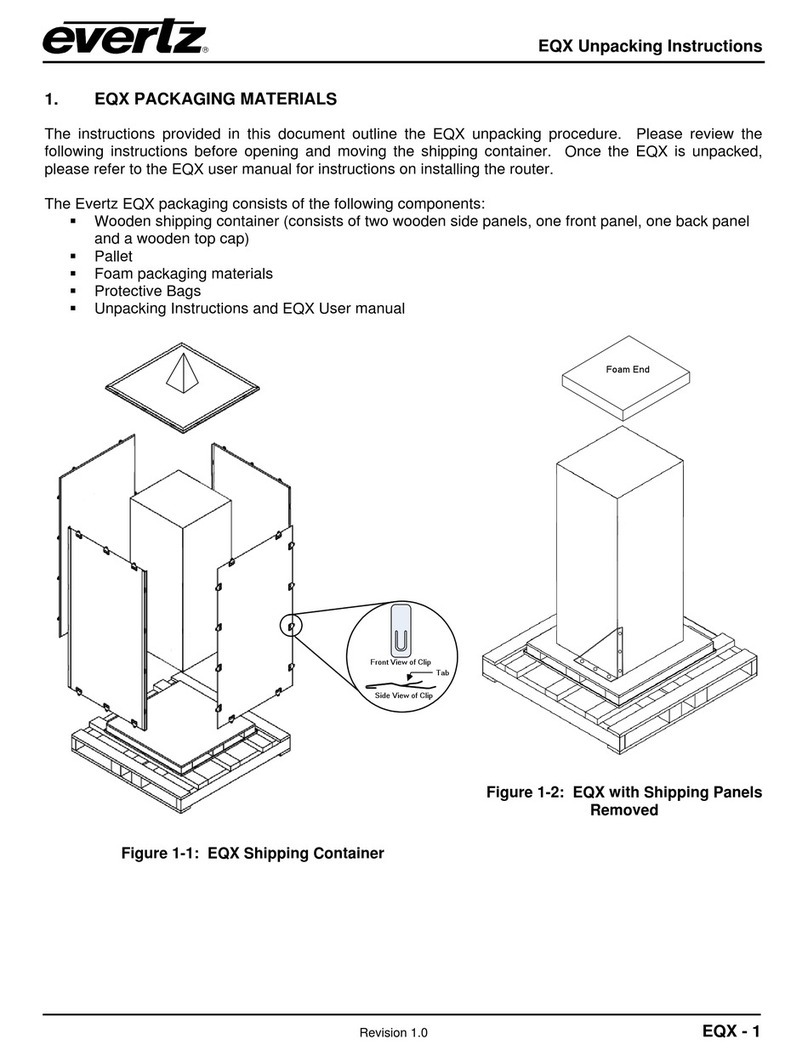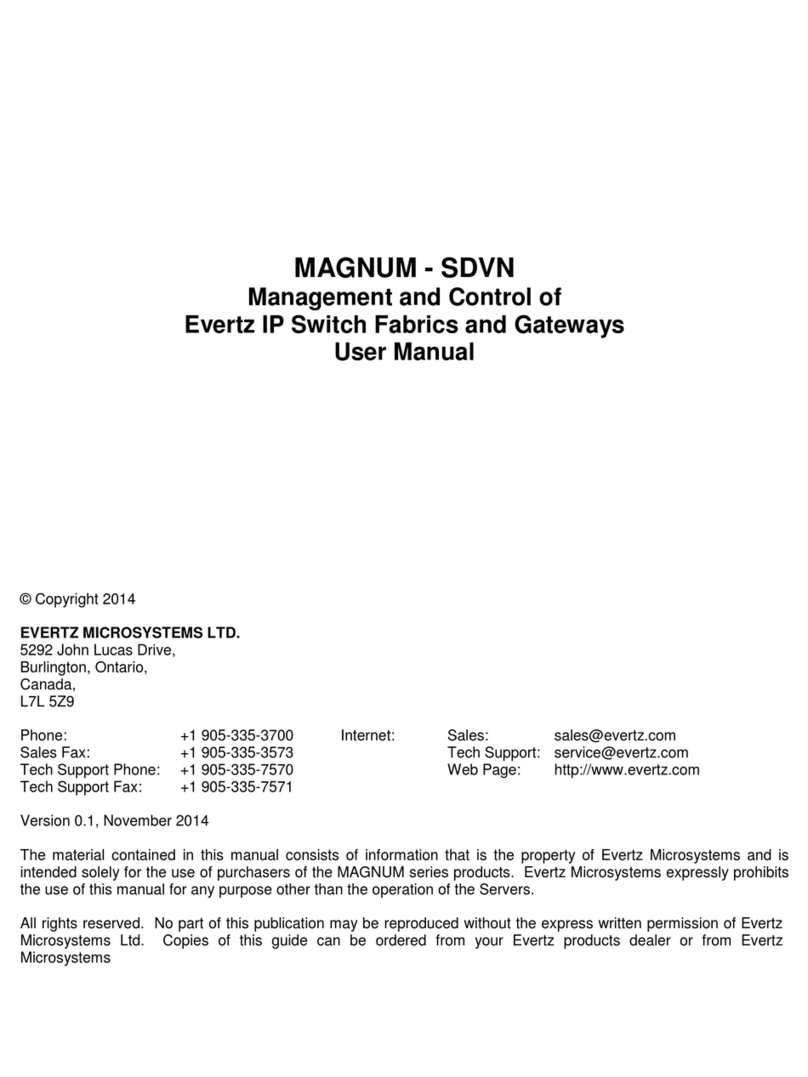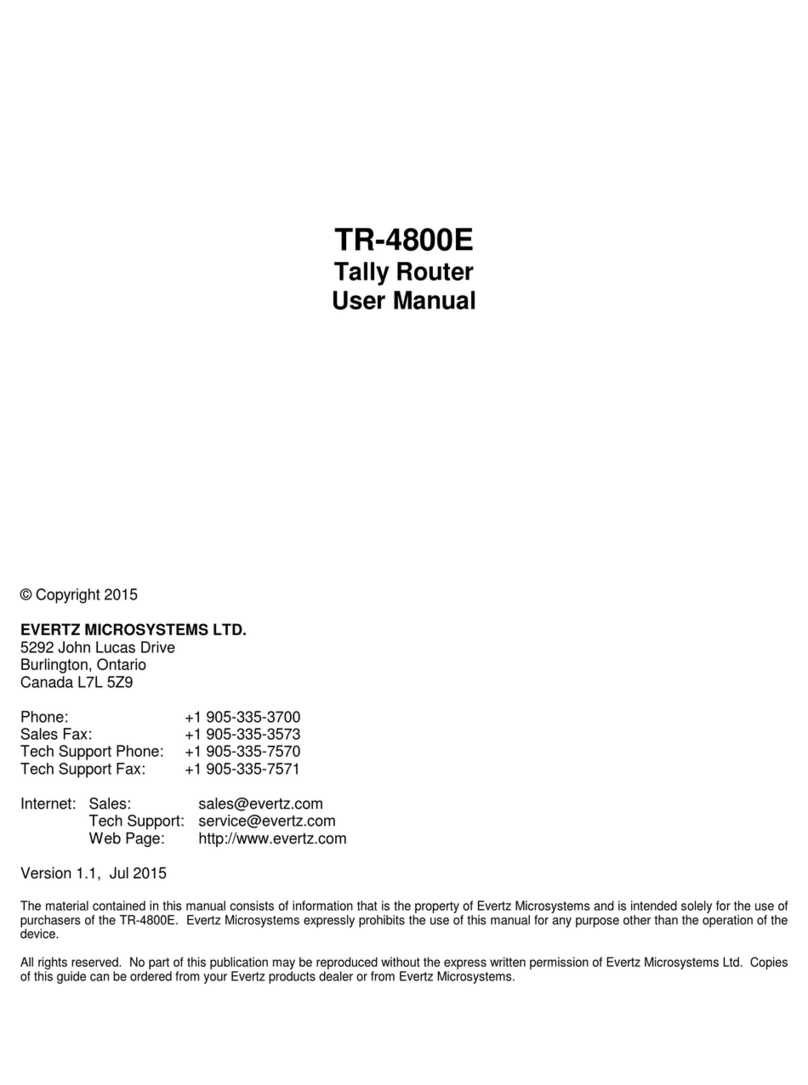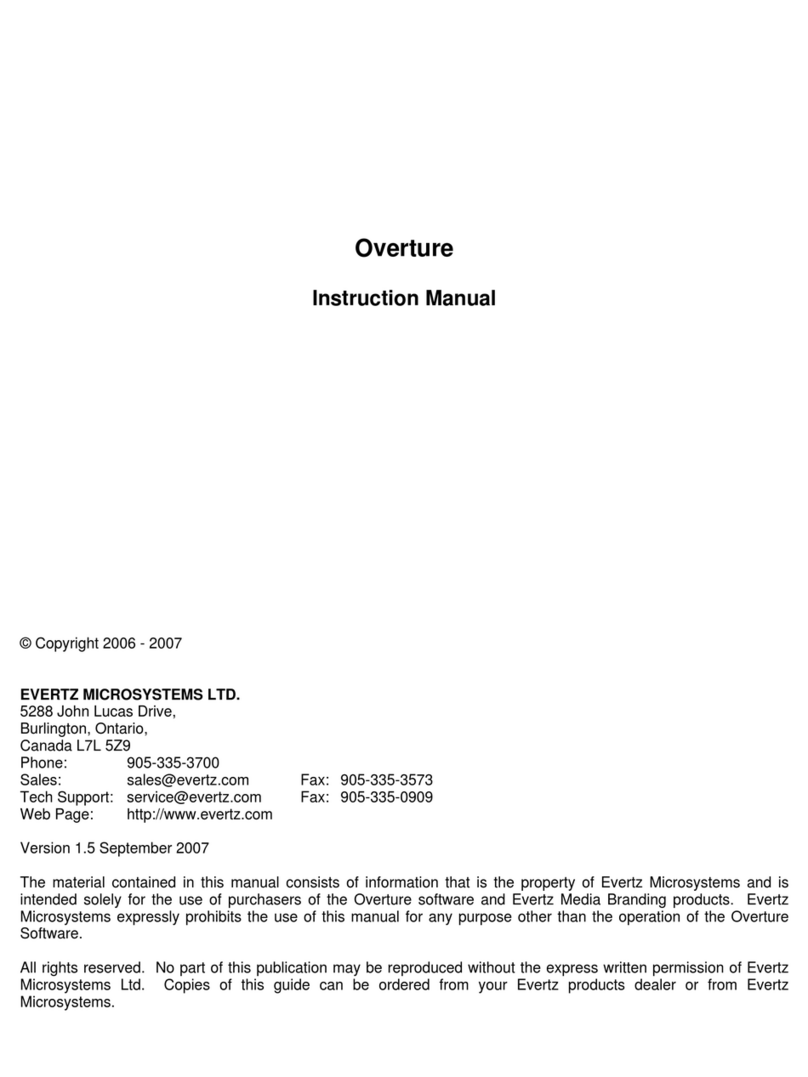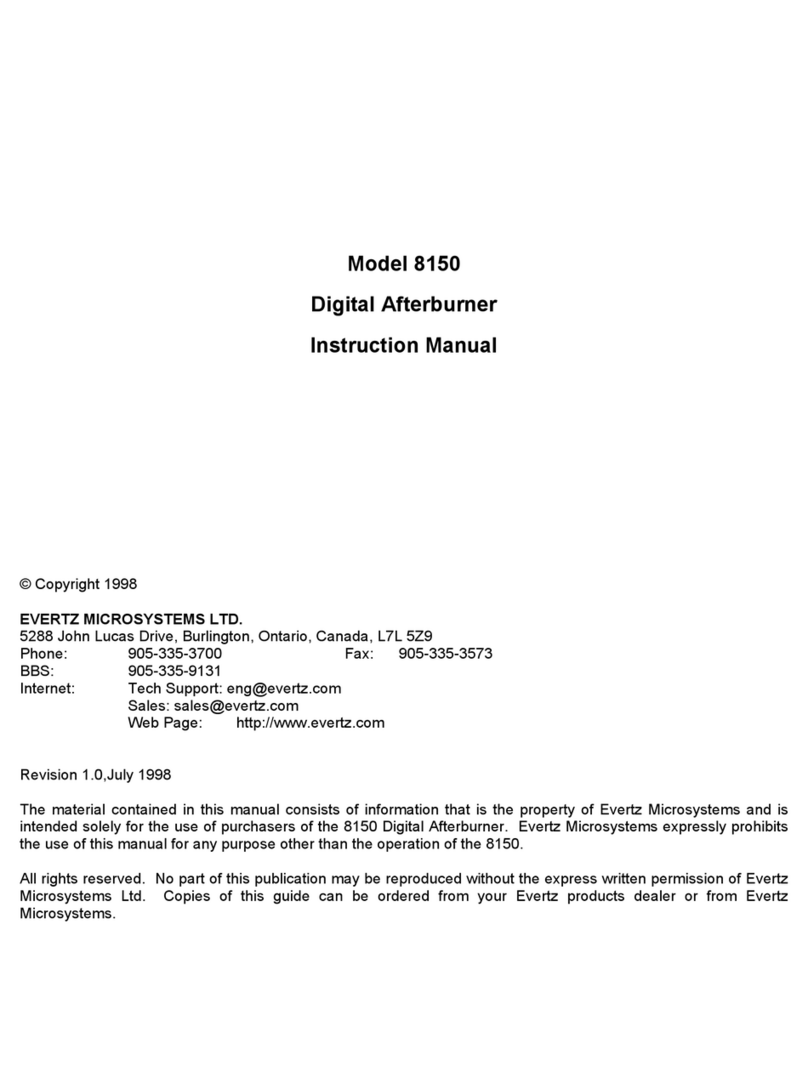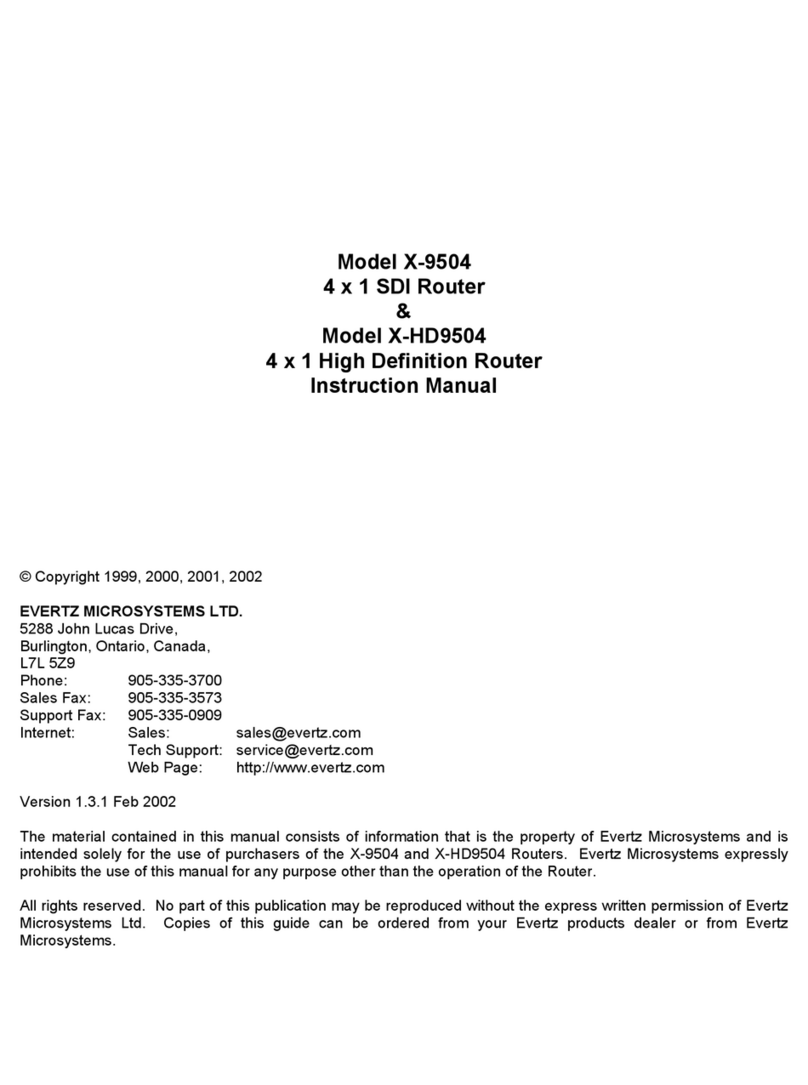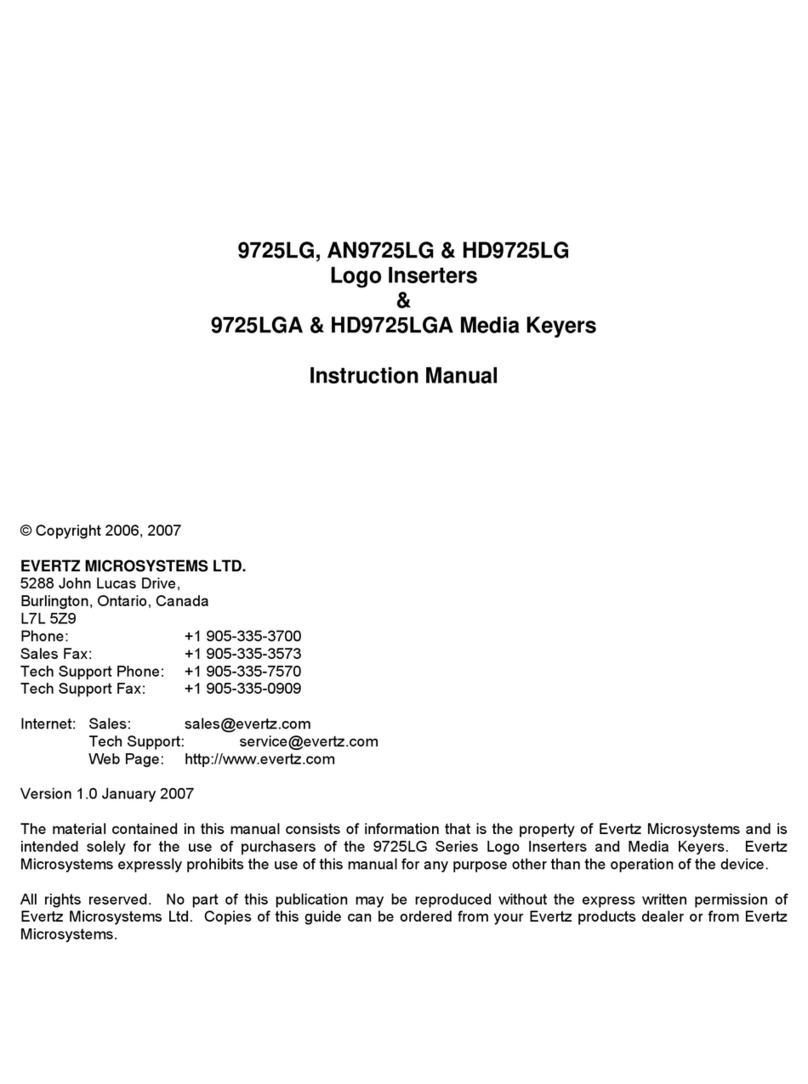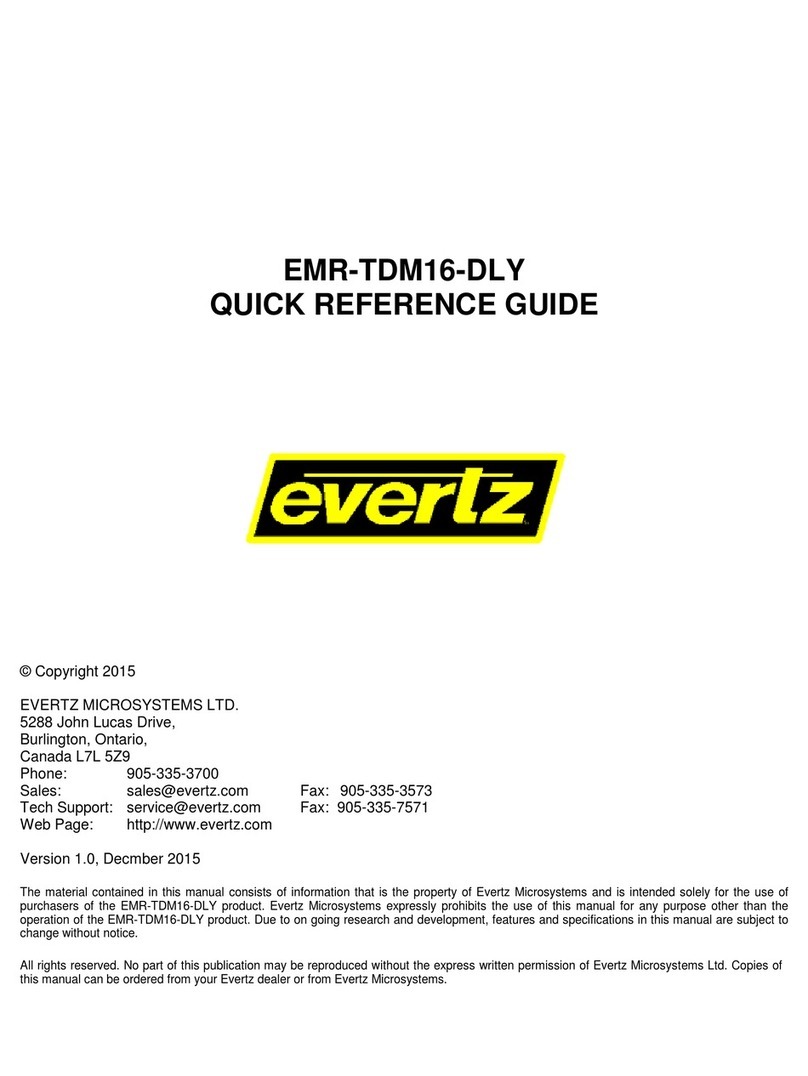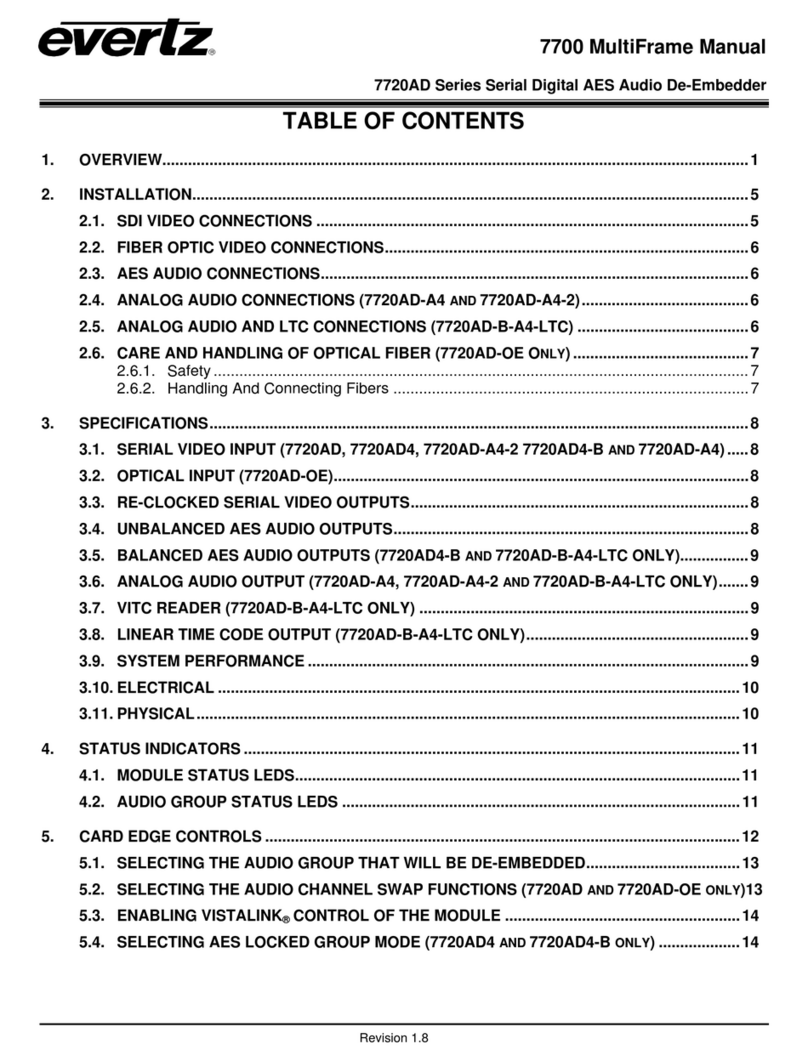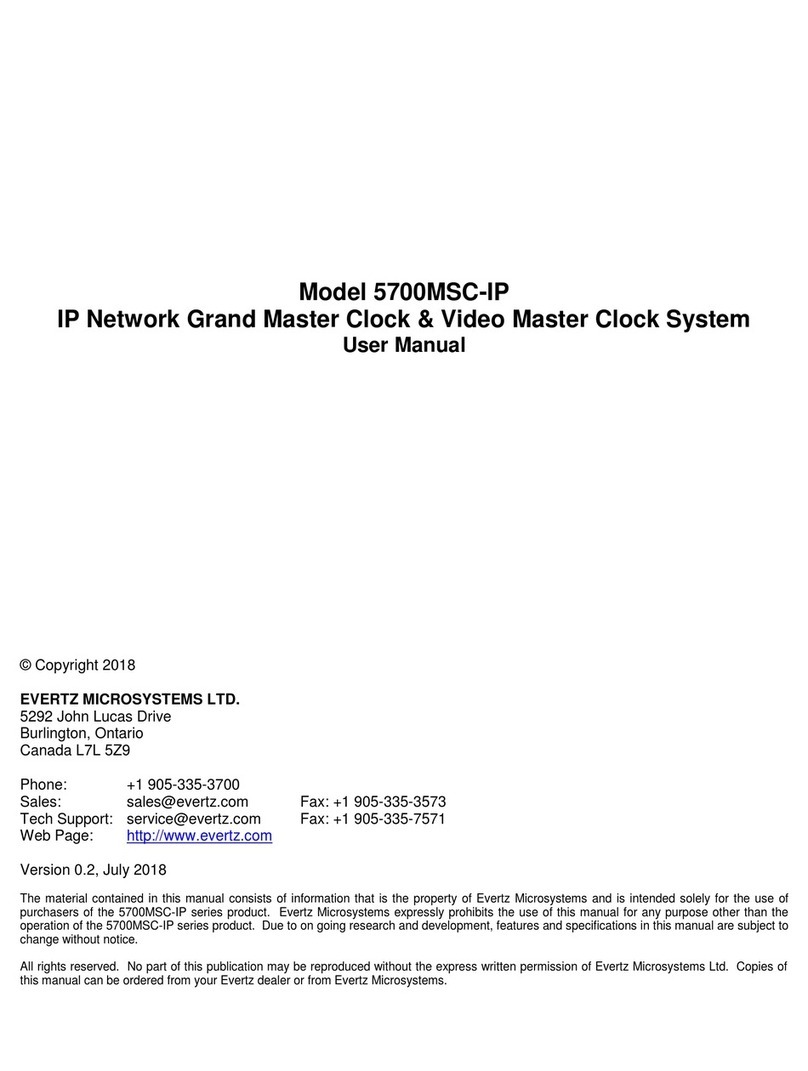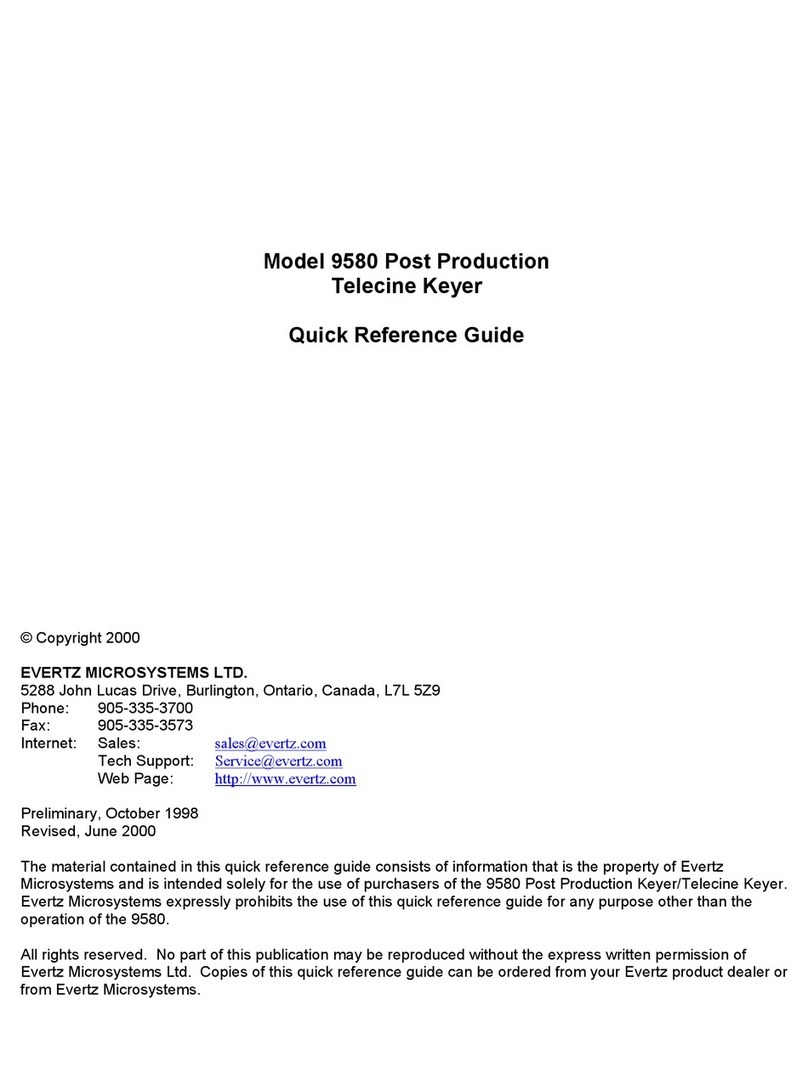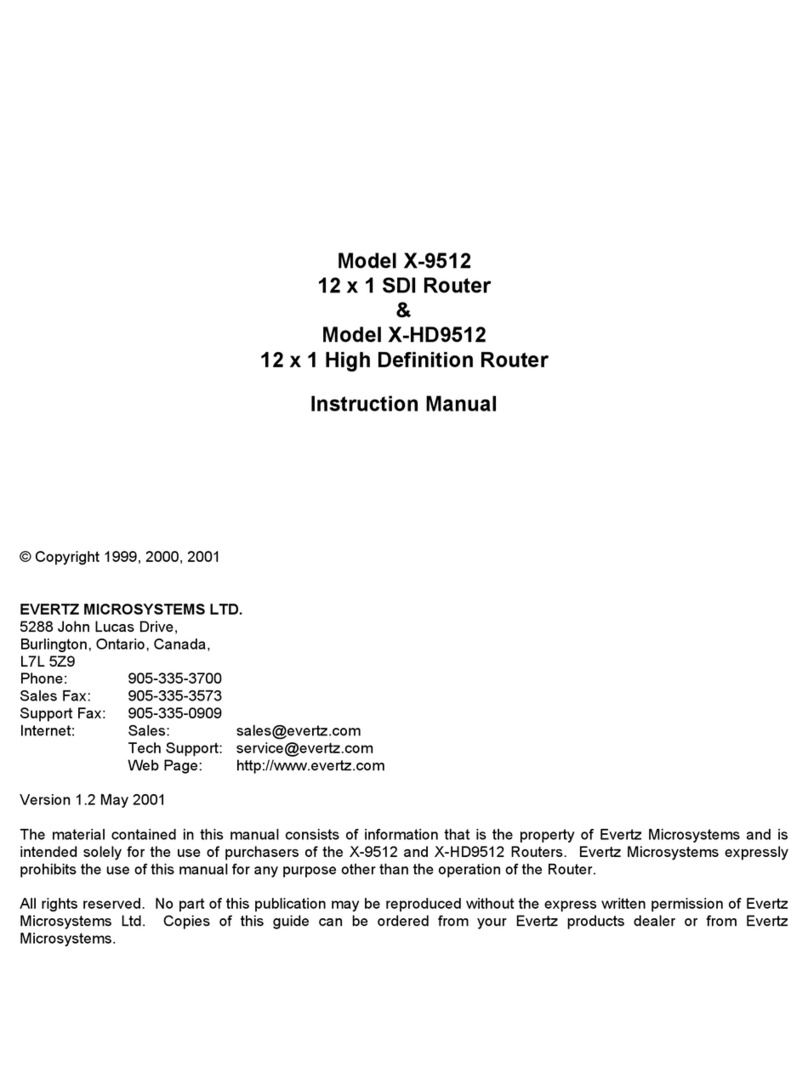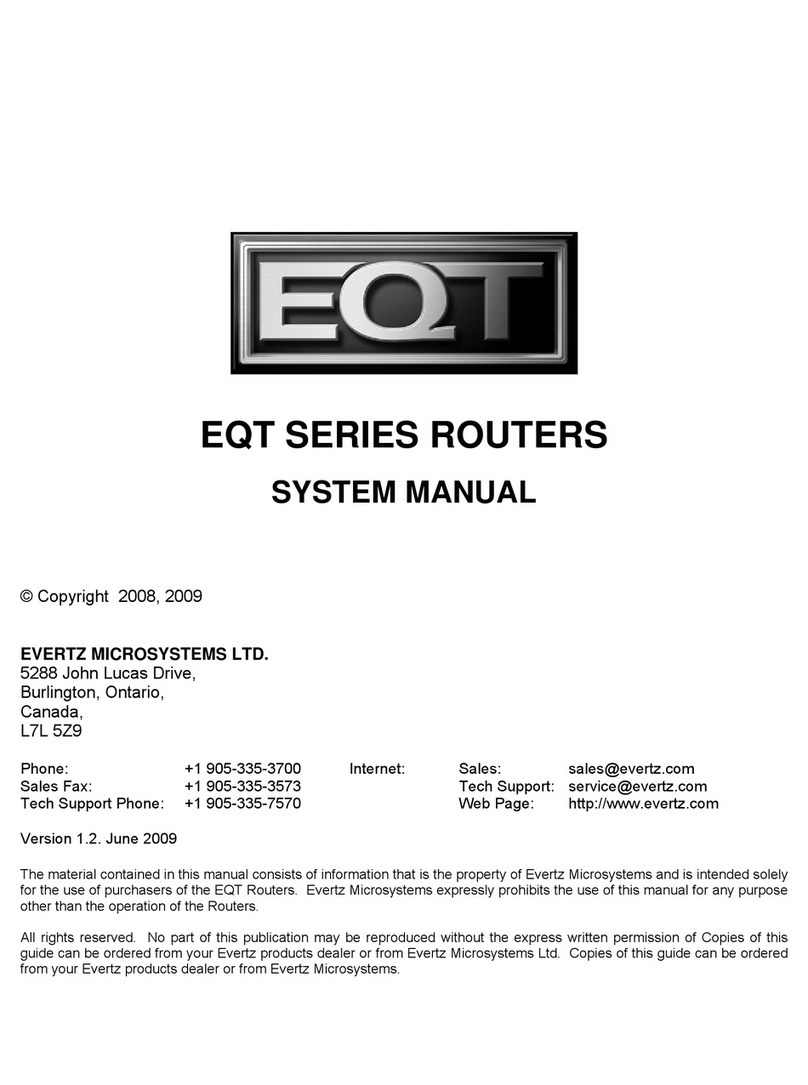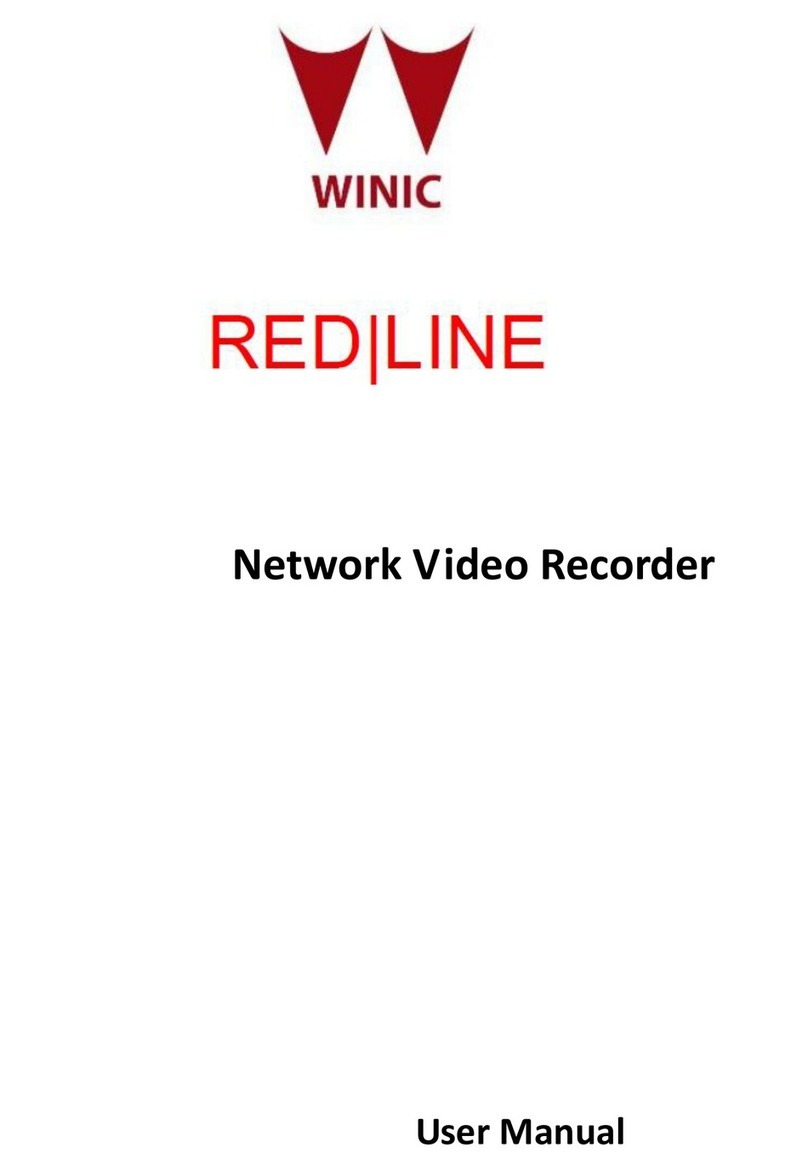
7700 MultiFrame Manual
7780TSM-ASI Transport Stream Monitor
Revision 1.0
TABLE OF CONTENTS
1. INSTALLATION OF 7780TSM-ASI ................................................................................................ 1
1.1. HARDWARE INSTALLATION............................................................................................... 2
1.2. CONFIGURING THE BASIC NETWORK SETTINGS ........................................................... 4
1.3. CONNECTING TO VLPRO .................................................................................................... 5
2. CARD CONFIGURATION............................................................................................................... 7
2.1. INPUT STATISTICS............................................................................................................... 7
2.2. NETWORK STATISTICS....................................................................................................... 8
3. CONFIGURING INPUTS................................................................................................................. 9
3.1. BITRATE VIEW TAB.............................................................................................................. 9
3.2. INPUT CONFIGURATION TAB ........................................................................................... 10
3.2.1. Input Parameters ...................................................................................................... 10
3.2.2. Misc Control Entry..................................................................................................... 11
3.2.3. Input Control ............................................................................................................. 11
3.3. INPUT MONITOR TAB......................................................................................................... 11
3.3.1. Input Monitor............................................................................................................. 12
3.3.2. Error Monitor............................................................................................................. 12
3.4. TS SYNTAX ERRORS – P1 & P2........................................................................................ 12
3.4.1. P1 Necessary for Decoding...................................................................................... 13
3.4.2. P2 Recommended.................................................................................................... 14
3.5. TS SYNTAX ERRORS - P3.................................................................................................. 15
3.5.1. P3 DVB Tables ......................................................................................................... 15
3.5.2. P3 ATSC Tables....................................................................................................... 16
3.5.3. ETSI TR 101 290 Test Conditions............................................................................ 17
3.6. FAULT CONTROL............................................................................................................... 17
3.7. TRIGGER FAULTS TAB...................................................................................................... 18
4. TROUBLESHOOTING.................................................................................................................. 19
4.1. VLPRO DOES NOT DISPLAY THE 7780TSM-ASI ALARMS............................................. 19
4.2. UPDATING VLPRO SERVER JAR FILE............................................................................. 19
5. ABBREVIATIONS......................................................................................................................... 21
